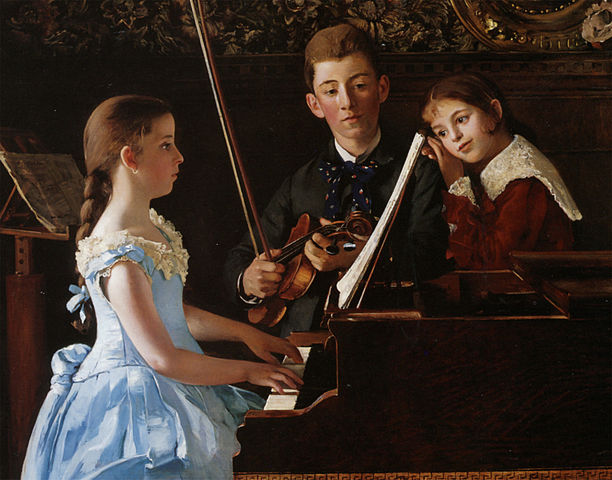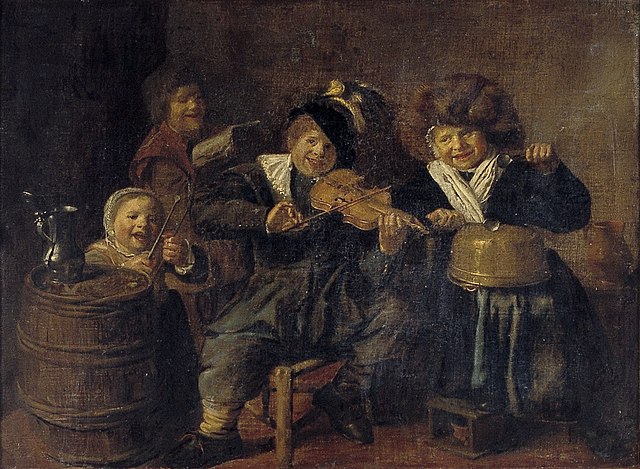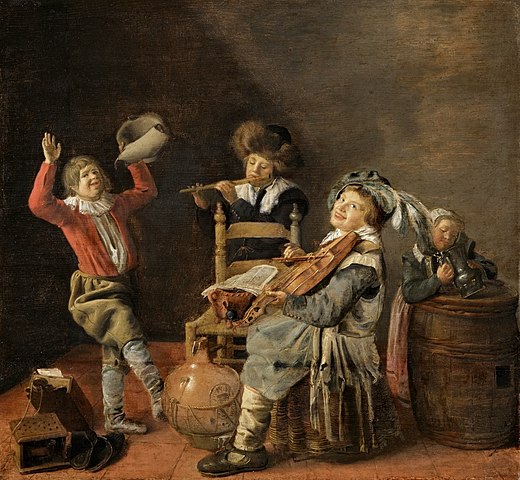
Thammasat University students who are interested in music, cultural studies, education, music therapy, psychology, and related subjects may find a newly available book useful.
The Power of Music: An Exploration of the Evidence is an Open Access book, available for free download at this link:
https://library.oapen.org/handle/20.500.12657/57388
The authors are Susan Hallam, Emerita Professor of Education and Music Psychology at University College London, the United Kingdom, and Evangelos Himonides, Professor of Technology, Education, and Music, UCL Institute of Education, University College London.
The TU Library collection includes several books about the psychology of music.
The Power of Music: An Exploration of the Evidence gathers and synthesises research in neuroscience, psychology, and education to develop our understanding of the effects of listening to, and actively making, music.

The book’s introduction begins:
The speed of change in electronic media in the latter part of the 20th century revolutionised access to and the use of music in people’s lives. Music can be accessed in many ways, through radio, CDs, DVDs, TV, tablets, SMART technologies, computers and phones, and can be downloaded to enable the creation of personal playlists. This can be achieved with very little effort, but this was not always the case. Historically, people could only access music through participating in religious or other social events. These changes have made it possible for individuals to use music to manipulate their moods, arousal levels and feelings, and create environments which may change the way that other people feel and behave. Music can be used to aid relaxation, overcome powerful emotions, generate moods appropriate for carrying out routine activities, prepare for social activities or stimulate concentration. In short, music can be used to promote wellbeing. In young people, it supports the development of identity and self-presentation. Alongside this, technological advances in research techniques have increased our understanding of the way that music can benefit the intellectual, social and personal development of children and young people. The chapters in this book explore the ways that music can benefit children and young people, as well as the wellbeing and health of the general population. This introductory section sets out what we know about the functions and origins of music; the transfer of learning; methodological issues; ways of engaging with music with varying levels of commitment; music therapy; and issues related to the interpretation of research findings…
A bone flute estimated to be about 50,000 years old has been found in a Neanderthal burial site and this may have been predated by singing. In China, bone flutes have been found dating back to 6000 BCE, stone flutes from 1200 BCE, and a system of classification of instruments according to the materials that they were made of from 500 BCE. Such evidence of the early use of instruments has been found in several cultures. Despite the evidence of musical activity in early humans, there is no consensus as to whether music has evolutionary significance, although the arguments for its evolutionary role are strong. For instance, Miller (2000) has argued that music exemplifies many of the classic criteria for a complex human evolutionary adaptation, pointing out that no culture has ever been without music (universality); musical development in children is orderly; musicality is widespread, all adults can appreciate music and remember tunes; we have a specialist memory for music; specialised cortical mechanisms are involved; there are parallels in the signals of other species—for example, birds, gibbons and whales—so evolution may be convergent; and music can evoke strong emotions which implies receptive as well as productive adaptations…
Not all authors agree that music has evolutionary purpose. Some suggest that music, along with the other arts, has no evolutionary significance and no practical function. Music is condemned as an evolutionary parasite. Pinker (1997) argues that music is bound to the domain of language, auditory scene analysis, habitat selection, emotion and motor control, and merely exploits the capacities that have evolved to subserve these areas. Music is an evolutionary by-product of the emergence of other capacities that have direct adaptive value. It exists simply because of the pleasure that it affords; its basis is purely hedonic. In the 21st century, music has a multiplicity of functions which operate at several levels: that of the individual, the social group and society in general…

There is extensive evidence of the key role that music plays in the lives of individuals. Music can generate feelings of wellbeing, can facilitate working through difficult emotions, and is frequently linked to spirituality. It is widely used for exploring and regulating emotions and moods and can be effective in inducing positive affective states, achieving desirable moods and also for coping with negative moods and emotions. The most common activity for mood regulation is listening to music. Even adolescents who play an instrument report that the best activity for mood regulation is listening to music alone. In adolescence, music makes a major contribution to the development of self-identity. It plays an important role in teenagers’ lives and they spend many hours listening to it. Teenagers listen to music to pass time, alleviate boredom, relieve tension and distract themselves from worries. Music is seen as a source of support when they are feeling troubled or lonely, acting as a mood regulator and helping to maintain a sense of belonging and community. It is also used in relation to impression management needs. By engaging in social comparisons, adolescents are able to portray their own peer groups more positively than other groups in their network and are thus able to sustain positive self-evaluations. Music facilitates this process. At the individual level, music has also been seen as a vehicle for emotional expression, conveying ideas and emotions which might be difficult to communicate in ordinary verbal interchanges. Music elicits physical responses, can aid relaxation or stimulate activity, and is particularly effective in changing moods. Listening to music provides opportunities to experience aesthetic enjoyment and be entertained, while making music can be seen as a source of reward and intellectual stimulation, providing interesting and challenging activities at the rehearsal stage, and opportunities to demonstrate expertise and musicianship in performance which, if successful, can lead to enhanced self-esteem. In small groups, music is a means of communication. Making music is a social activity in that creating, interpreting, performing and hearing music all depend on shared social meanings. Music can serve to provide shared experiences and understandings which assist in binding together social groups, supporting their identities. This is apparent in its use in children’s games and also in adolescence, where music becomes one of the central aspects of young people’s chosen youth culture. Music is also used in work contexts. It can facilitate the appropriate level of stimulation for mental or physical activity and may also serve to ensure that individuals literally work in time together. Emotional expression can also be important at the group level, for instance, in protest songs. It provides a means of expressing feelings towards subjects which are taboo or where there are inhibitions regarding the expression of emotions—for example, love, and not only romantic love but the love of God or a country, school or institution. Music fosters prosocial behaviour, a shared sense of success, physical coordination, shared attention, shared motivation and group identity. It creates and strengthens social bonds amongst interacting group members through endorphins, which are released during synchronised exertive movements in singing or playing together and are involved in social bonding across primate species. In society as a whole, music provides a means of symbolic representation for ideas and behaviours. It can represent the state, patriotism, religion, bravery, heroism or rebellion. It can encourage conformity to social norms through songs or alternatively may incite challenges to those social norms. It provides validation of social institutions and religious rituals and plays a major part in ceremonial occasions including weddings, military functions, funerals and sporting events. Music also contributes towards the continuity and stability of culture, as individuals respond in similar ways to the music of their own culture, while the social nature of musical activity invites and encourages individuals to participate in group activities, reducing social isolation.

(All images courtesy of Wikimedia Commons)
